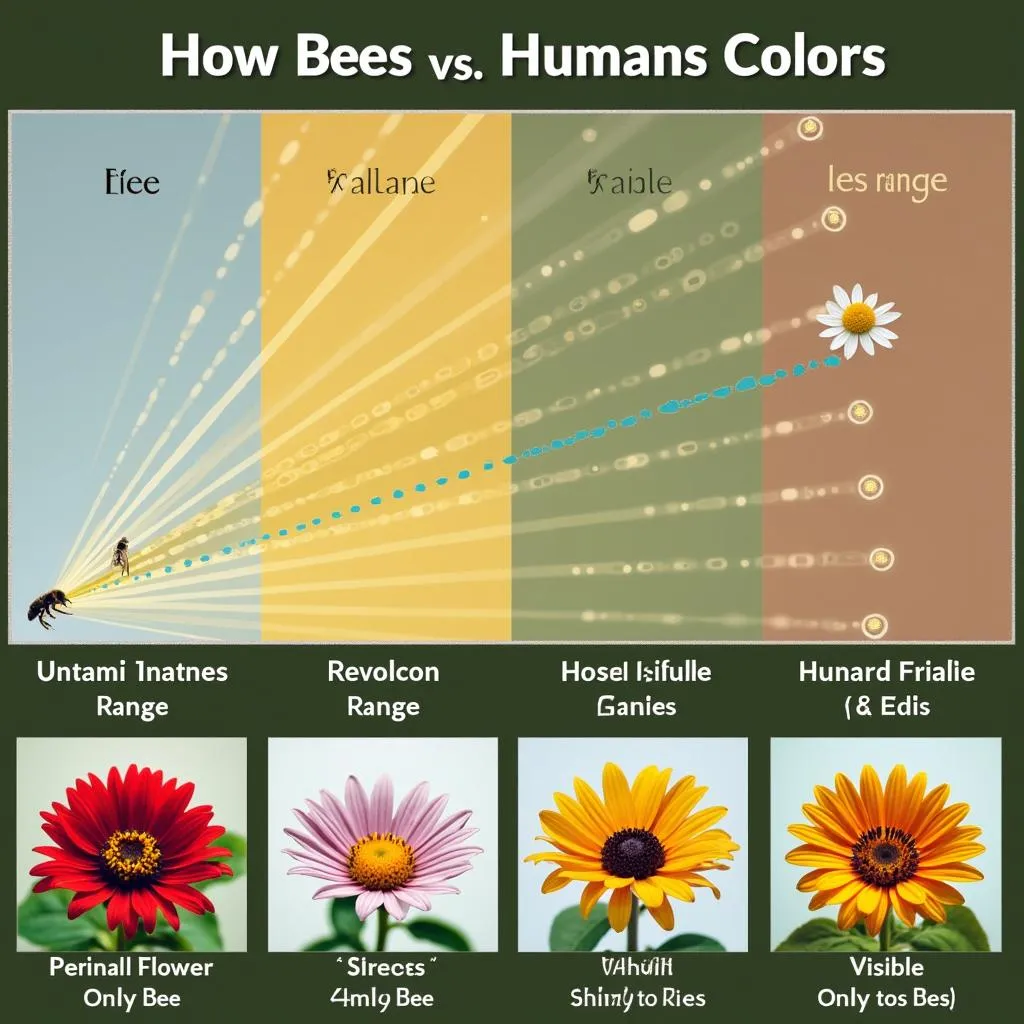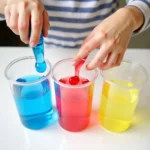Bees are essential pollinators, playing a vital role in the ecosystem and our food supply. Understanding their behavior, including their attraction to colors, is crucial for both beekeepers and gardeners alike. While it’s widely believed that bees are drawn to bright colors, the question of whether they are attracted to dark colors requires a deeper dive into the fascinating world of bee vision and behavior.
Debunking the Myth: Bees Don’t See the World Like Us
The first step to understanding bee color preference is recognizing that their vision differs significantly from ours. Humans perceive a wide spectrum of colors, from deep reds to vibrant violets. Bees, however, have a different visual range. They can see ultraviolet light, which is invisible to the human eye, but they are less sensitive to the red end of the spectrum.
This unique visual system allows bees to perceive colors and patterns on flowers that we might miss entirely. They can see intricate ultraviolet markings on petals, acting as “nectar guides,” leading them to the sweet reward.
 Bee vision compared to human vision
Bee vision compared to human vision
Not Black and White: It’s About Contrast and Brightness
While it might be tempting to say bees are attracted to dark colors, the reality is more nuanced. Instead of simply being attracted to dark colors, bees are more attuned to contrast. They are drawn to flowers that stand out from their surroundings, whether it’s a bright flower against green foliage or a dark flower against a lighter background.
“Bees rely heavily on visual cues to locate flowers efficiently,” explains Dr. Emily Scott, an entomologist specializing in bee behavior. “High contrast helps them quickly identify potential food sources amidst a sea of green.”
 Bee pollinating a dark flower
Bee pollinating a dark flower
Beyond Color: Factors Influencing Bee Attraction
While color plays a crucial role, it’s not the only factor influencing bee attraction. Other factors like scent, flower shape, and even electric fields also contribute to a bee’s foraging decisions.
- Scent: Bees have a keen sense of smell and are attracted to the sweet, floral fragrances emitted by many flowers.
- Flower Shape: Different bee species have preferences for specific flower shapes, allowing them to access nectar more easily.
- Electric Fields: Believe it or not, flowers emit weak electric fields that bees can detect, providing additional information about the flower’s nectar and pollen rewards.
Creating a Bee-Friendly Garden: Embrace Diversity
So, Are Bees Attracted To Dark Colors? The answer is not a simple yes or no. While they might not perceive dark colors as we do, contrast and brightness are key. Instead of focusing solely on color, aim for a diverse garden with a variety of flower shapes, sizes, and colors, including those with darker hues that stand out against their surroundings.
Remember, a bee-friendly garden is about more than just aesthetics; it’s about supporting these essential pollinators and contributing to a healthy ecosystem.
